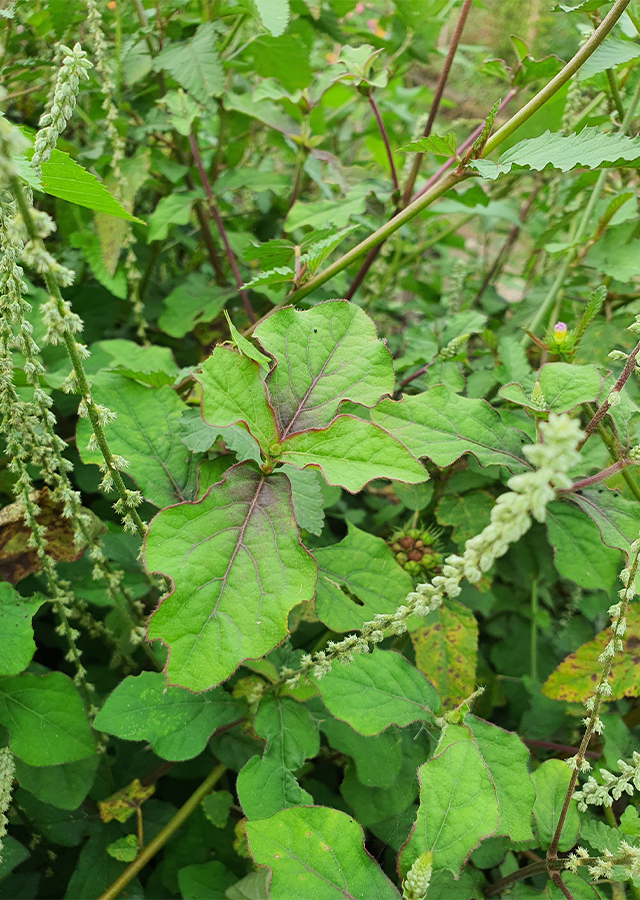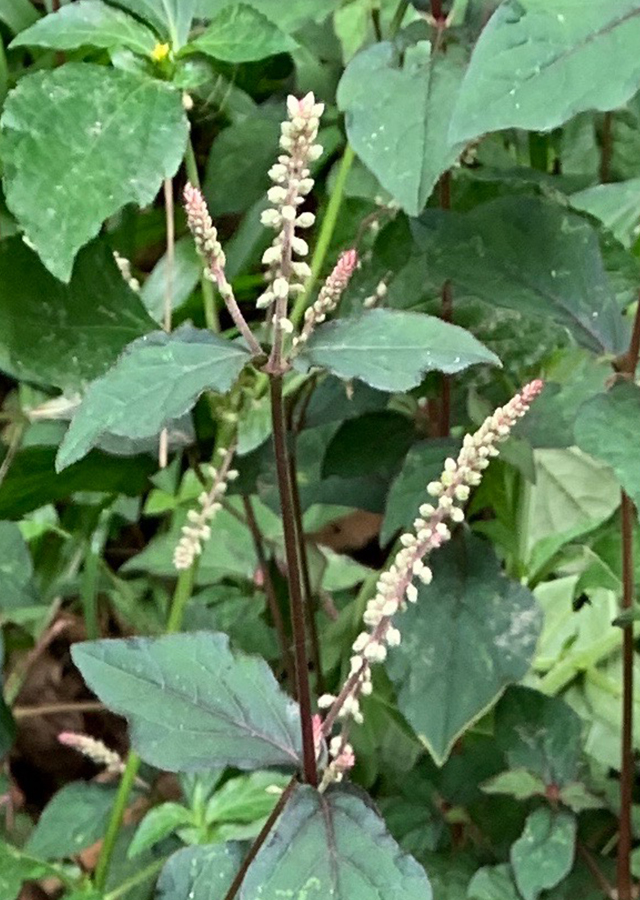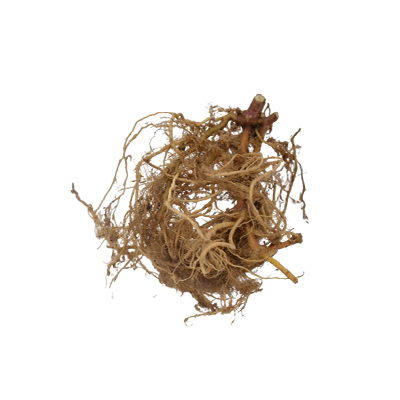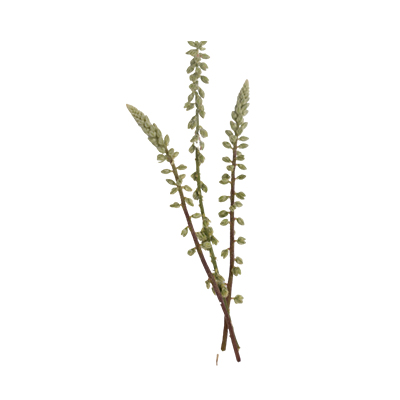Pastureweed
Cyathula prostrata (L.) Blume
Amaranthaceae
Location in our garden
Principal



Synonym
Achyranthes debilis Poir.
Achyranthes diffusa Moench
Achyranthes globosa Pers.
Habitus
Herbaceous. An annual to perennial herb, which can grow up to a height of 30-50 cm tall
Part Used
Leaves
Flowers
Latex
Roots
Stem
The Whole Plant
Growing Requirements
Need Shade
Habitat
Forest
Shrublands
Grassland
Overview
Pastureweed is native to Africa, Asia and Papua New Guinea, Palau, Timor-Leste and North-East Australia in Oceania. It now has a pantropical distribution after being introduced in other countries in Oceania and in Central and South America. A weedy plant and is classed as an invasive species in a number of Pacific Islands. It is a well known herb used in Ayurveda medicine.
Vernacular Names
Rumput jarang-jarang (Indonesia), Nyarang (Malaysia), Andot ko (Cambodian), Yaa phaanngu lek (Thailand), Kinjan (Papua New Guinea), Bei xian (Chinese), Dayang (Philippines).
Agroecology
Cyathula prostrata has a weedy habit, plantations, rough pastures, along roadsides and in wet areas such as by swamps and streams, in teak forests, secondary forests, often gregariously and from sea level up to 1,650 m altitude.
Morphology
- Stems – obtusely quadrangular, thickened above the nodes, often tinged with red, covered with patent and fine hairs.
- Leaves – rhomboid-oblong, 2 to 8 cm long, and gradually tapering to an acute base.
- Flowers – numerous, greenish, ovoid, and about 3 mm long. Sepals are hairy.
- Fruits – ovoid capsule, very thin with almost membranous pericarp, measures 1.5-2 mm long, thin-walled, hairless, 1-seeded and surrounded by stiff perianth.
- Seeds – ovoid or ellipsoidal, measures 1-1.5 mm long and shiny brown. The seedling is with epigeal germination.
Cultivation
- By seeds.
- By stem cuttings – take cuttings of about 12 cm long to start new plants. Insert into well-draining fertile soil mix. Place the root cuttings under shelter initially. Once new growth appears, harden off the young plants before transplanting.
Chemical Constituents
Saponins, tannins, flavonoids, alkaloids, cardiac glycosides, steroids, essential oils, terpenes palmitic acid ester, diterpene, terpenoids, anthraquinones, phlobatannins.
Traditional Medicinal Uses
- Studies have suggested antibacterial, anticancer, antidiabetic, analgesic, antiulcer, hepatoprotective, antiinflammatory, antihypertensive, and antioxidant properties.
- In Malaysia, the aerial parts in decoction are drunk against cough, and a decoction of the roots is used against dysentery.
- In the Philippines and Guinea, the ash of the burnt plant mixed with water is rubbed on the body for scabies and other skin ailments.
- In Thailand, the stem in decoction is taken as a diuretic and to increase menstrual discharge.
- In Cameroon, the plant is prescribed for articular rheumatism.
- In Taiwan, a decoction of the leaves is applied to snakebites.
- In Papua New Guinea, the juice of the stem is used as an abortifacient.
- In Indonesia, the leaves mashed with water are a remedy for cholera”
Part Used







